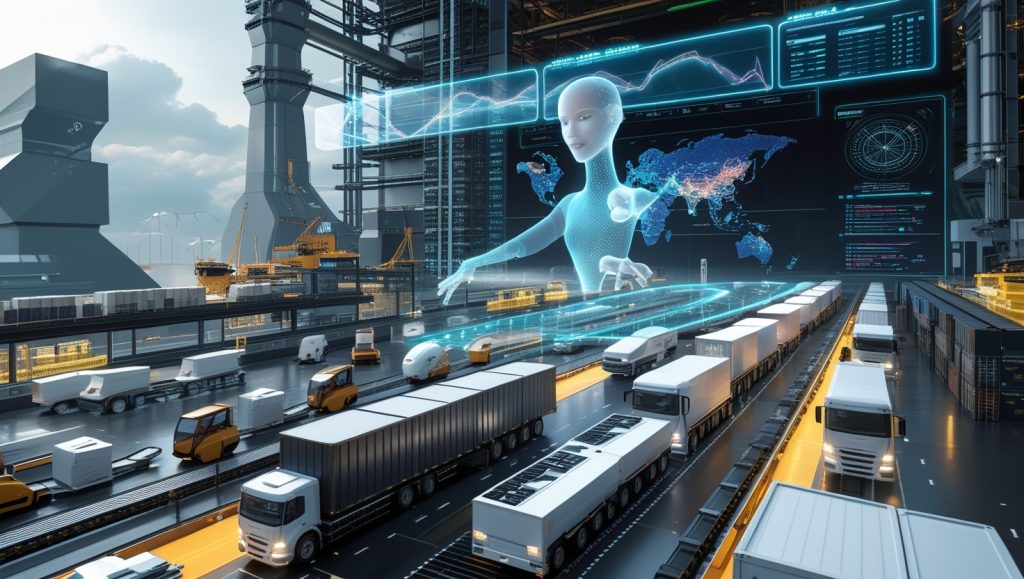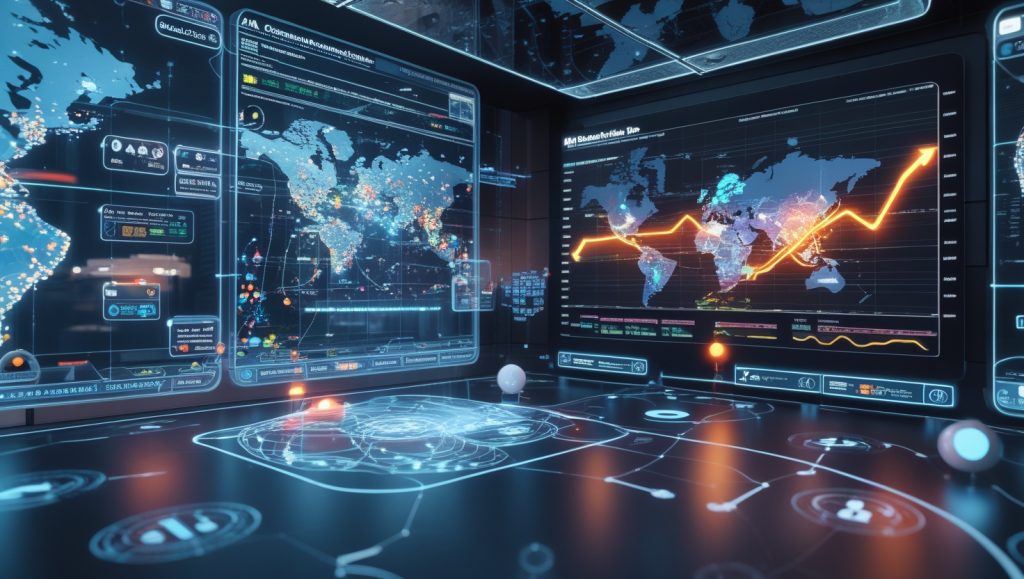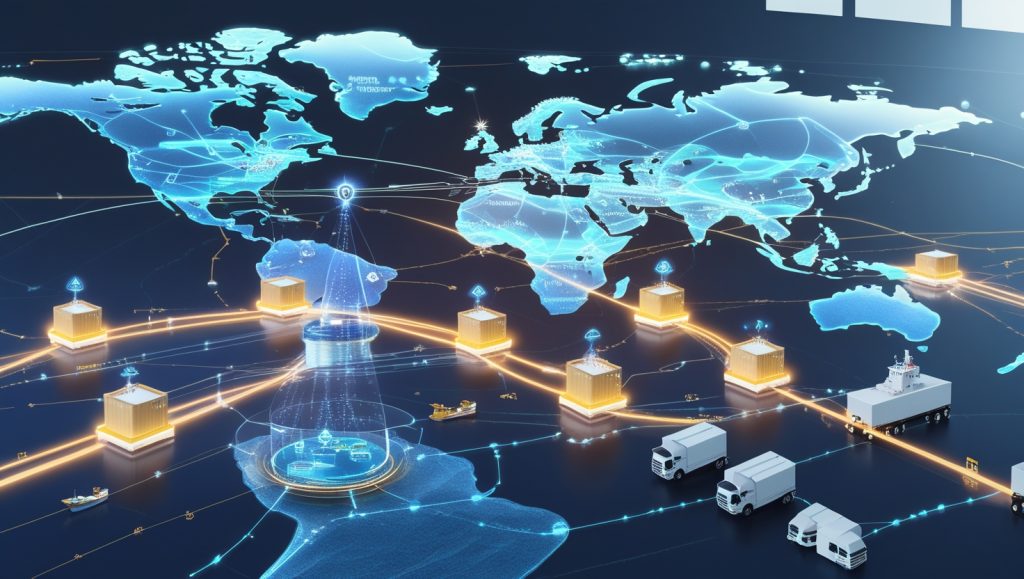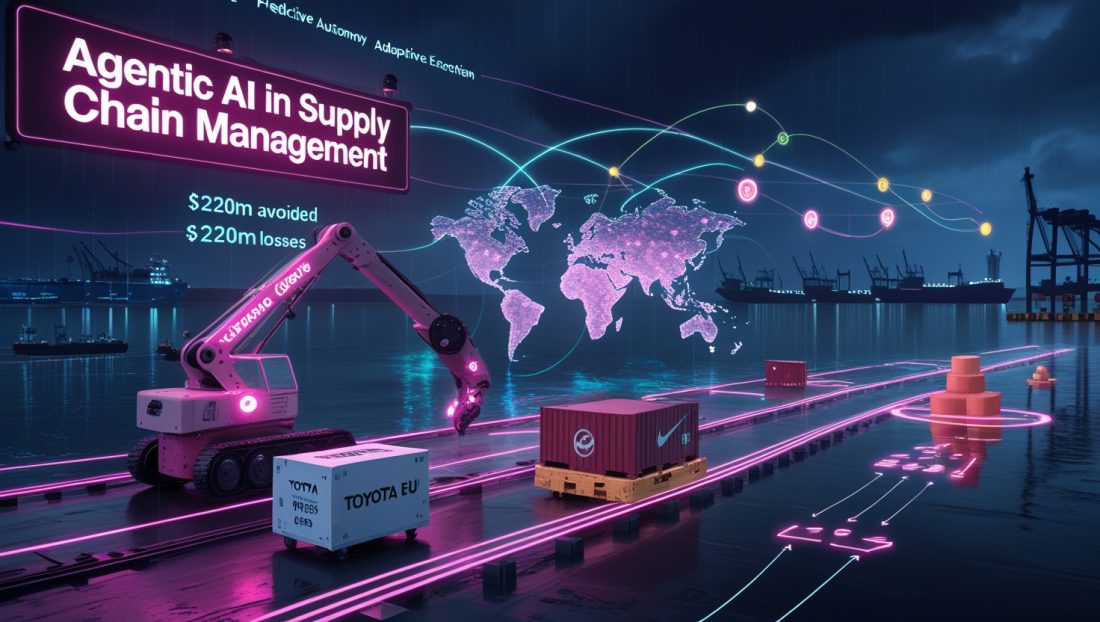The Urgency of Autonomous Supply Chains
What if your supply chain could predict and adapt to disruptions before they escalate? In 2025, this capability defines industry leaders. When a cyberattack paralyzed Toyota’s European parts distribution, its Agentic AI system rerouted shipments via rail networks in under 12 minutes, avoiding $220M in losses. This is the power of Agentic AI in Supply Chain Management—a paradigm shift from reactive troubleshooting to proactive resilience.
Global supply chains now face compounding challenges: climate volatility, geopolitical fractures, and consumer expectations for instant delivery. McKinsey estimates that companies leveraging autonomous decision-making tools reduce operational costs by 18–32% while achieving 95% on-time delivery rates. Yet, only 14% of enterprises have fully integrated these systems. This gap separates market leaders from laggards. For a deeper look at how autonomous systems transform logistics, explore Switzerland’s success with delivery robots revolutionizing global supply chains.
Defining Agentic AI: Beyond Automation

Agentic AI in Supply Chain Management represents systems capable of end-to-end decision-making without human intervention. These agents analyze real-time data from IoT sensors, weather APIs, and geopolitical databases to execute actions aligned with business goals. Unlike traditional automation, Agentic AI in Supply Chain Management adapts dynamically, learning from each decision to optimize future outcomes. To understand how AI-driven automation is reshaping industries like grocery, check out how AI is revolutionizing grocery automation.
Core Capabilities Driving Adoption
Predictive Autonomy
Procter & Gamble’s AI agents forecast raw material shortages six months in advance, securing alternative suppliers 40% faster than manual processes. This predictive power stems from Agentic AI in Supply Chain Management, which processes vast datasets to anticipate risks.
Adaptive Execution
During the 2024 Red Sea crisis, Maersk’s fleet rerouted 230 vessels autonomously, cutting fuel costs by $14M and avoiding 12-day delays. This adaptability showcases Agentic AI in Supply Chain Management at its finest, ensuring operational continuity in turbulent times.
Self-Optimization
Coca-Cola’s warehouse robots in Belgium now adjust picking routes dynamically, slashing energy use by 25% while improving order accuracy to 99.8%. For more on energy-efficient robotics, see how 2025 trends are transforming industries.
The Mechanics of Autonomous Decision-Making

Predictive Disruption Management
Modern systems ingest unstructured data—satellite imagery, port congestion reports, even labor strike rumors—to model risks. For example, Siemens’ AI predicted a semiconductor shortage 11 months before it impacted production, enabling strategic stockpiling. This capability ties into why unstructured data is revolutionizing AI in 2025.
Why It Matters: Agentic AI in Supply Chain Management excels at identifying risks humans might miss, processing thousands of data points in seconds to deliver actionable insights. This foresight prevents costly disruptions and ensures competitive advantage.
Case Study: Nike’s 2025 Vietnam Crisis Response
When factory closures hit Ho Chi Minh City earlier this year, Nike’s Agentic AI shifted 78% of production to automated factories in Mexico and reshuffled global inventory. Revenue dipped just 3% against competitors’ 15–20% losses. This case highlights how Agentic AI in Supply Chain Management drives resilience. For insights into automated manufacturing, read about BMW’s humanoid robots in precision manufacturing.
Ethical and Regulatory Challenges
Autonomy introduces dilemmas. In 2023, an Amazon fulfillment AI prioritized speed over safety, leading to a warehouse injury. The incident sparked debates on accountability frameworks. Dr. Helena Rong from MIT’s Supply Chain Ethics Lab emphasizes, “We need audit trails for every AI decision. Transparency isn’t optional—it’s existential.” For a broader discussion on AI ethics, see why AI ethics could save or sink us.
Why Accountability Is Non-Negotiable: Without clear ethical guidelines, Agentic AI in Supply Chain Management risks unintended consequences, from safety violations to biased decision-making. Companies must prioritize transparency to maintain trust and compliance.
2025’s Pioneering Applications
Autonomous Freight Networks
DHL’s AI-controlled cargo planes optimize flight paths in real-time, considering weather, fuel costs, and emissions. The result? A 22% reduction in carbon footprint and $8M annual savings. This aligns with the rise of aerial construction drones enhancing safety and efficiency.
Why This Is Game-Changing: Autonomous freight networks powered by Agentic AI in Supply Chain Management cut costs and emissions, aligning with global sustainability goals while boosting profitability.
Self-Healing Inventory Systems
Walmart’s AI agents adjust orders across 4,700 stores hourly. In Q1 2025, the system averted $90M in potential stockouts by rerouting inventory from overstocked regions. For more on innovative inventory solutions, explore robotic microfactories for on-demand manufacturing.
Supplier Risk Intelligence
Unilever’s AI evaluates 12,000 suppliers using 450 risk indicators—from financial health to carbon emissions. Earlier this year, it flagged a critical palm oil supplier’s unethical practices, triggering a seamless transition to vetted alternatives. This capability ties into why robotics in recycling is reshaping global sustainability.
Why Supplier Intelligence Matters: Agentic AI in Supply Chain Management ensures ethical sourcing and mitigates risks, protecting brand reputation and operational stability in a volatile market.
Strategic Implementation: Lessons from Early Adopters
Phase 1: Data Infrastructure Overhaul
Agentic AI demands unified data lakes. Schneider Electric integrated ERP, IoT, and supplier systems into a single platform, enabling AI agents to reduce procurement errors by 67%. Learn more about data-driven AI advancements in why explainable AI is the future of trustworthy tech.
Phase 2: Human-AI Collaboration Models
IKEA’s “AI Copilot” program trains managers to validate AI decisions. Hybrid teams achieved 30% faster crisis resolution during the 2024 Suez Canal blockage. For insights into human-robot collaboration, check out soft humanoid robots for home safety.
Phase 3: Scalability Through Edge Computing
FedEx deployed edge AI in delivery trucks, enabling real-time rerouting during traffic surges. Package delays fell by 19% despite a 33% volume increase. Discover more about edge AI’s impact in powering real-time intelligence.
Why Scalability Is Critical: Edge computing enables Agentic AI in Supply Chain Management to operate in real-time, even in remote or high-pressure environments, ensuring seamless scalability for global operations.
Future Projections: What’s Next for Autonomous Supply Chains?

Gartner anticipates that by 2027, Agentic AI will manage 80% of routine supply chain decisions. Emerging trends include:
- Quantum AI: IBM’s experiments show quantum-powered agents solving multi-node optimization 1,000x faster than classical systems. For more on quantum advancements, see quantum machine learning in robotics.
- Blockchain Integration: Maersk’s TradeLens platform uses AI and blockchain to automate customs clearance, cutting processing from days to hours. Learn how AI and blockchain are transforming industries in why robotics in 3D printing unlocks potential.
FAQs: Addressing Common Concerns
How cost-prohibitive is Agentic AI for SMEs?
Cloud-based solutions like Coupa’s Autonomous Spend Management start at $2,500/month—a 90% cost drop since 2022.
Can AI handle black swan events like pandemics?
Yes, but only with robust scenario libraries. Companies that simulated pandemic models pre-2020 adapted 50% faster during COVID-19.
What about job displacement fears?
MIT studies show AI creates 3.7M new roles (e.g., AI trainers) for every 1M roles automated by 2030.
The Path to Autonomous Excellence
Agentic AI in Supply Chain Management isn’t a luxury—it’s a survival tool in volatile markets. As you explore adoption, prioritize ethical guardrails and employee upskilling. For a deeper dive into AI’s transformative potential, explore why AI-driven model optimization is redefining business survival in 2025.
Your Next Step:
Subscribe to our Newsletter for monthly insights on scaling autonomous systems. Download our free Implementation Checklist to avoid common pitfalls.

